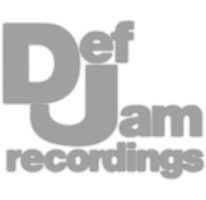Room041 - Analog ObsessionT-De-esser Plus - TechivationGSatPlus - TBProAudioBaby Comeback - Baby AudioRS-w2395c - Fuse Audio LabsFresh Air - Slate DigitalMagic Switch - Baby AudioChannev - Analog ObsessionDystortion - Stoff AudioTrack 24 - Low Wave Studios
When saturating a signal, it helps to understand that both harmonic distortion and soft-knee compression is occurring. The harmonics and the ratio of compression will depend on the incoming signal, and the component or emulation being used to saturate the signal - like a tube, or transistor.
Baby Comeback - Baby AudioMagic Dice - Baby AudioMagic Switch - Baby AudiodBComp - Analog ObsessionReLife - Analog ObsessionPREDD - Analog ObsessionRoom041 - Analog ObsessionSSQ - Analog ObsessionDirty Spring - BPBOrange Flavor - SNFK MusicInitial Clipper - Initial AudioValvola - Hornet PluginsGentle Drives - Brain SyntheticT-De-Esser Plus - Techivation
Most engineers mix primarily in stereo, while occasionally monitoring their mix in mono to check its mono compatibility. To monitor your mix in mono, use a utility plugin or one designed to sum a stereo signal to mono, and place the plugin on your mix bus.
Q6 - Subtractive EQC1 Compressor - Downward CompressionDe-esser - High Hz. CompressionLo Air - Sub Harmonic GenerationDoubler - Vocal ModulationMV2 - Low-Level CompressionH-Delay - Thickening DelayRVerb - Early Reflection ReverbQ6 - Additive EQGW VoiceCentric - 1 Plugin Chain
If you want to make your vocals sound more like an analog recording, use analog emulation plugins or use an EQ to mimic the frequency response of classic analog gear. Furthermore, only use processing that was available at the time, for example, use plate or chamber reverb emulation.
When mixing drums, trying finding ways to both thicken the sound, and increase the detail of the transients. For example, bus compression with a super quick attack and release, as well as a hard knee, will distort transients in turn making them more prominent - it’ll also glue the sound.
When mixing vocals, use some unique techniques like multiband upward compression, or series de-essers to make your vocals sound better. One of the easiest ways to make a vocal sound better is to use multiband saturation, with which you can distort each frequency range for a specific purpose.
Keep Things Simple When PossibleUse Saturation for Multiple EffectsUse Compression MusicallyTry Series Compression on VocalDon’t Mix with a Limiter on the MixBusBe Particular with ReverbBPM Equation ExplainedKnow When to Use Linear PhaseTry Binaural Panning Instead of Stereo ExpansionUse Busses for Cohesion
When mixing vocals with a beat, we’ll either want to separate the two or blend the two more. To separate them we can boost frequencies on the vocal and cut those same frequencies on the beat, or maybe introduce even harmonics on the beat, and odd on the vocal.
When mixing high end, the main tool you’ll use is an equalizer, with which you can amplify the highs, and expand the highs if the EQ is mid-side. Other useful tools are frequency-specific saturation, a compressor with a short attack and release settings, and airy reverb.
When mixing male vocals, start with subtractive equalization followed by de-essing and compression - these 3 effects will attenuate aspects of the vocal you don’t want and control the dynamics. Then introduce additive forms of processing like exciting, distortion, delay, vocal reverb, additive equalization, and more.
If you want to make a fire mix, start with subtractive eq and saturation on your instruments, then focus on vocal and drum reverb. From there you can create vocal layers using a tuner, and affect your mixbus to create a full and impressive sound.
When making dark vocals you can use a high shelf filter to attenuate high frequencies, or you can use low tape speed emulation to attenuate highs while distorting mids. Another option for making dark vocals is to use reverb and isolate the reflections to the lows of the vocal.
7. Easy Limiter - EmRys 6. Limiter - Kilohearts 5. W1 Limiter - George Yohng 4. Frontier - D16 3. Barricade v4 - Toneboosters









